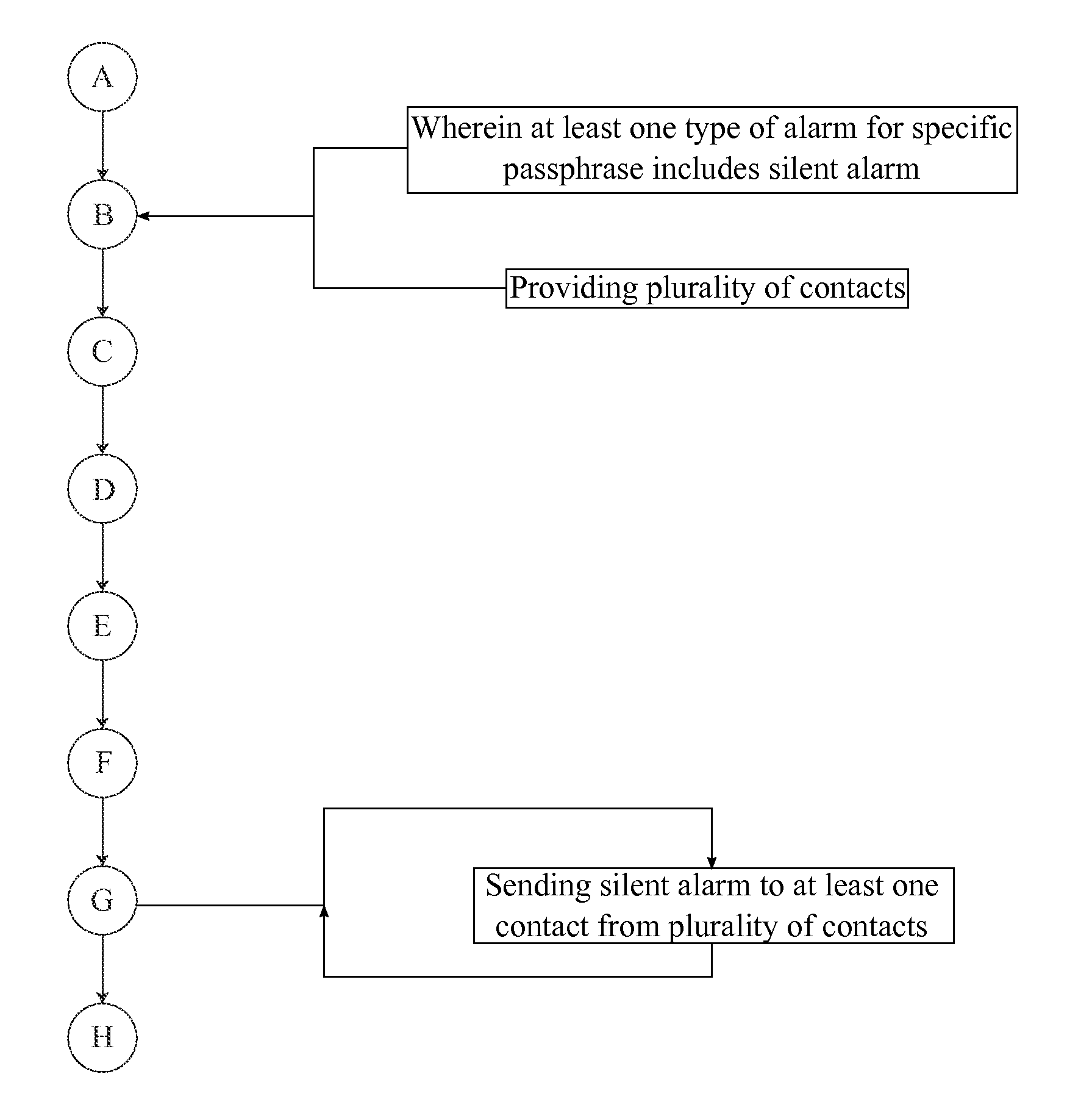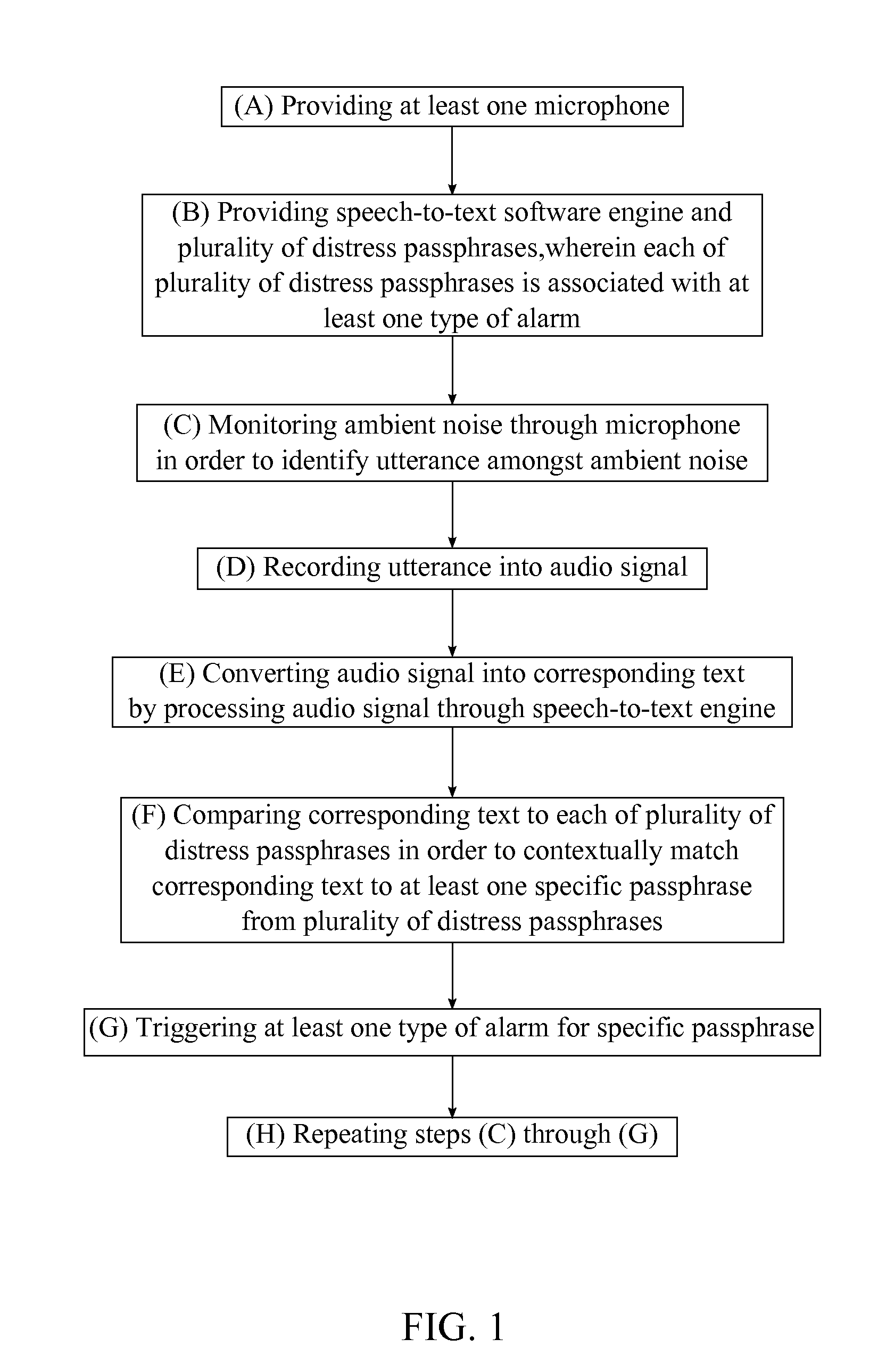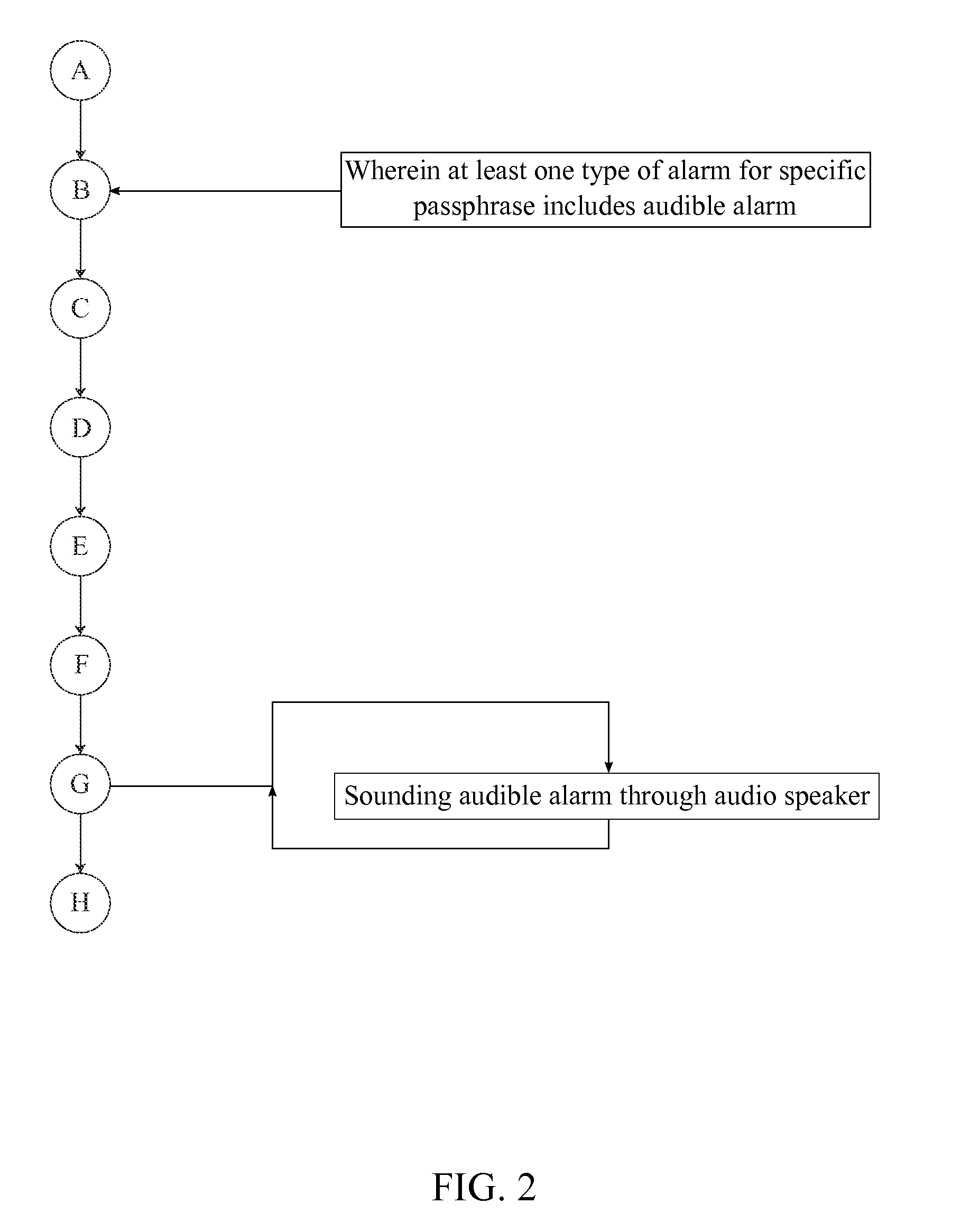Method for an Automated Distress Alert System with Speech Recognition
a distress alert and speech recognition technology, applied in the field of automatic emergency notification systems, can solve problems such as difficult call for assistance, inability to call for help, and overtly calling for help, and achieve the effect of bringing danger
- Summary
- Abstract
- Description
- Claims
- Application Information
AI Technical Summary
Benefits of technology
Problems solved by technology
Method used
Image
Examples
Embodiment Construction
[0014]All illustrations of the drawings are for the purpose of describing selected versions of the present invention and are not intended to limit the scope of the present invention.
[0015]The present invention is an automated emergency response system. The present invention uses speech recognition software in conjunction with at least one microphone to continuously monitor ambient noise for a preconfigured emergency passphrase to be spoken and upon detection, respond accordingly. Two preferred ways that the present invention may respond includes sounding an audible alarm and sending an alert signal to emergency responders and or a list of emergency contacts. Alternative actions may also be taken by the present invention. The system may be implemented in a variety of environments and locations such homes, stores, banks, and offices where people are going about their daily routine. Since any emergency response system, by nature, should only be triggered in an emergency situation, the ...
PUM
 Login to View More
Login to View More Abstract
Description
Claims
Application Information
 Login to View More
Login to View More - R&D
- Intellectual Property
- Life Sciences
- Materials
- Tech Scout
- Unparalleled Data Quality
- Higher Quality Content
- 60% Fewer Hallucinations
Browse by: Latest US Patents, China's latest patents, Technical Efficacy Thesaurus, Application Domain, Technology Topic, Popular Technical Reports.
© 2025 PatSnap. All rights reserved.Legal|Privacy policy|Modern Slavery Act Transparency Statement|Sitemap|About US| Contact US: help@patsnap.com



